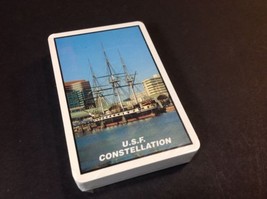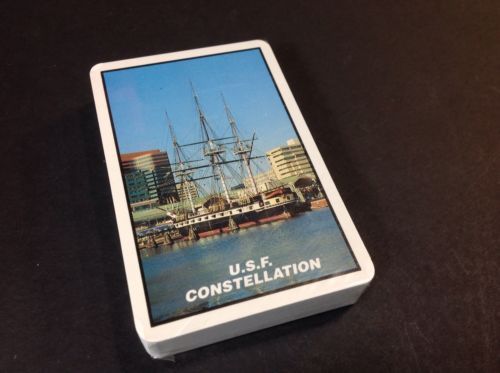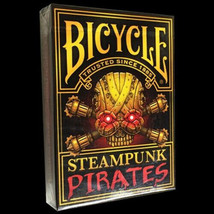Playing Cards U.S.F. Constellation and 50 similar items
Free Shipping
Playing Cards U.S.F. Constellation Advertising Card Deck Souvenir new free ship
$9.49
View full item details »
Shipping options
Estimated to arrive by Fri, Apr 25th.
Details
FREE via USPS Media Mail (2 to 9 business days) to United States
Offer policy
OBO - Seller accepts offers on this item.
Details
Return policy
Full refund available within 30 days
Purchase protection
Payment options
PayPal accepted
PayPal Credit accepted
Venmo accepted
PayPal, MasterCard, Visa, Discover, and American Express accepted
Maestro accepted
Amazon Pay accepted
Nuvei accepted
View full item details »
Shipping options
Estimated to arrive by Fri, Apr 25th.
Details
FREE via USPS Media Mail (2 to 9 business days) to United States
Offer policy
OBO - Seller accepts offers on this item.
Details
Return policy
Full refund available within 30 days
Purchase protection
Payment options
PayPal accepted
PayPal Credit accepted
Venmo accepted
PayPal, MasterCard, Visa, Discover, and American Express accepted
Maestro accepted
Amazon Pay accepted
Nuvei accepted
Item traits
| Category: | |
|---|---|
| Quantity Available: |
Only one in stock, order soon |
| Condition: |
New |
Listing details
| Seller policies: | |
|---|---|
| Shipping discount: |
Seller pays shipping for this item. |
| Posted for sale: |
More than a week ago |
| Item number: |
474240053 |
Item description
This is Playing Cards U.S.F. Constellation Advertising Card Deck Souvenir new free shipping from a pet and smoke free home from the USF Conellation
USS Constellation was a 38-gun frigate, one of the "Six Original Frigates" authorized for construction by the Naval Act of 1794.
She was distinguished as the first U.S. Navy vessel to put to sea and
the first U.S. Navy vessel to engage and defeat an enemy vessel.
Constructed in 1797, she was decommissioned in 1853.
American merchant vessels began to fall prey to Barbary Pirates, along the so-called "Barbary Coast" of North Africa, Morocco, Tunis (in future Tunisia), Tripoli (in future Libya), and most notably from Algiers (in future Algeria), in the Mediterranean Sea during the 1790s. Congress responded with the Naval Act of 1794.[3]
The Act provided funds for the construction of six frigates to be built
in six different East Coast ports; however, it included a clause
stating that construction of the ships would cease if the United States
agreed to peace terms with Algiers.[4][5] By the time of the conclusion in 1815, of the later War of 1812 with Great Britain, the United States had fought a series of three brief, but savage naval and amphibious wars.
Joshua Humphreys' design was long on keel and narrow of beam (width) to allow the mounting of very heavy guns. The design incorporated a diagonal scantling (rib) scheme to limit hogging and included extremely heavy planking. This gave the hull
greater strength than those of more lightly built frigates. Humphreys
developed his design after realizing that the fledgling United States
could not match for size the navies of the European states. He therefore
designed his frigates to be able to overpower other frigates, but with
the speed to escape from a "ship of the line" (equivalent to a modern-day "battleship").[6][7][8]
The "United States Frigate Constellation" was built under the direction of Colonel David Stodder at his naval shipyard on Harris Creek in Baltimore's Fells Point maritime community, according to a design by Joshua Humphreys and launched on 7 September 1797, just as the United States entered the Quasi-War with the revolutionary French Republic. Harris Creek which flows into the Northwest Branch of the Patapsco River
was later filled in to gain additional land for residential/industrial
development and diverted underground to a subterranean storm drain and
culvert in the early 19th century. It was situated east of Fells Point and south of where modern-day Patterson Park, (near Highlandtown), and the community of Canton are currently located.
An earlier visitor to the Harris Creek naval shipyard of David
Stodder, east of Baltimore Town in 1796, the Duke de la
Rochefoucaule-Liancourt, saw the "Constellation" under
construction and noted in his journal: "I thought her too much
encumbered with wood-work within, but in other respects she is a fine
vessel being built of those beautiful kinds of wood, the ever-green oak
and cedar; she is pierced for 36 guns."[9]
Armament
See also: Naval artillery in the Age of Sail
The Naval Act of 1794 had specified 36-gun frigates; however, "Constellation" and her sister-ship Congress were re-rated to 38's because of their large dimensions, being 164 ft (50 m) in length and 41 ft (12 m) in width.[10][11][Note 1]
The "ratings" by number of guns were meant only as an approximation, as "Constellation" could and did often carry up to 48 guns.[14]
Ships of this era had no permanent battery of guns such as modern Navy
ships carry. The guns were designed to be completely portable and often
were exchanged between ships as situations warranted. Each commanding
officer outfitted armaments to his liking, taking into consideration
factors such as the overall tonnage of cargo, complement of personnel
aboard, and planned routes to be sailed. Consequently, the armaments on
ships changed often during their careers, and records of the changes
were not generally kept.[15]

-
Refine your browsing experience
We can show you more items that are exactly like the original item, or we can show you items that are similar in spirit. By default we show you a mix.
This item has been added to your cart
 Playing Cards U.S.F. Constellation Advertising Card Deck Souvenir new free ship added to cart.
Only one available in stock
Playing Cards U.S.F. Constellation Advertising Card Deck Souvenir new free ship added to cart.
Only one available in stock
View Cart or continue shopping.
 Please wait while we finish adding this item to your cart.
Please wait while we finish adding this item to your cart.
Get an item reminder
We'll email you a link to your item now and follow up with a single reminder (if you'd like one). That's it! No spam, no hassle.
Already have an account?
Log in and add this item to your wish list.


























































